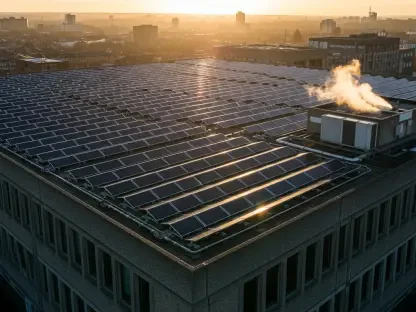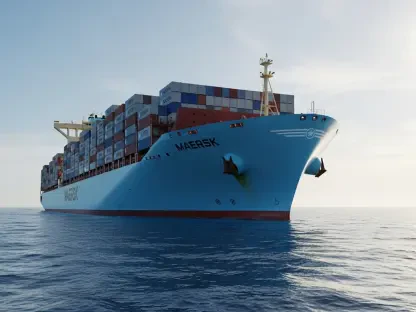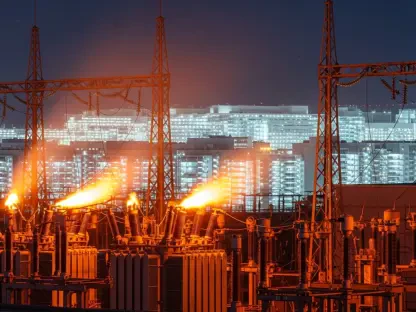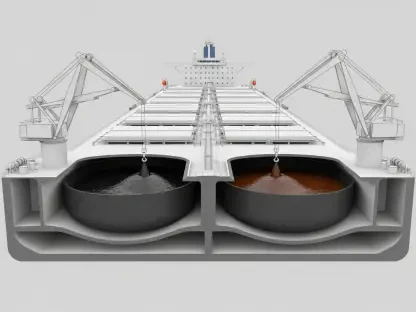The sustainable aviation fuel (SAF) sector is witnessing a groundbreaking transformation with SkyNRG’s acquisition of €300 million in funding. This financial infusion, led by APG and Macquarie Asset Management, emphasizes the growing confidence in the potential for SAF to revolutionize the aviation industry. Through substantial investments, stakeholders demonstrate their commitment to advancing clean energy solutions, aiming to mitigate the environmental impact of air travel. This article presents a comprehensive analysis of market trends influenced by SkyNRG’s expansion, highlighting current patterns and projecting future implications for SAF production and distribution.
Navigating a Shifting Landscape in Aviation Fuel
In recent years, the aviation industry has increasingly gravitated toward sustainable fuel solutions in response to mounting pressure to reduce emissions. SkyNRG, emerging as a formidable player, aligns with broader industry goals to transition from fossil fuels. This analysis outlines the company’s journey from its inception in 2009, providing SAF for commercial flights, to its current strategic move toward large-scale production. The shift represents not only an evolution for SkyNRG but a significant milestone in the industry’s ongoing quest for environmental sustainability.
Financial Forces Driving Market Dynamics
Strategic Backing by Leading Asset Managers
SkyNRG’s recent funding is propelled by €250 million from APG and €50 million from Macquarie Asset Management, reflecting strategic financial backing. This analysis delves into the underlying factors motivating such investments, considering the role of financial institutions in accelerating the SAF sector’s growth. Industry analysts note the importance of investor confidence in advancing the market, with financial support often synonymous with a robust prognosis for future expansion and success.
Expanding Production Facilities: Regional Impacts and Insights
With sights set on expanding across Europe and the U.S., SkyNRG plans to establish new production sites in the Netherlands, Sweden, and the United States. This strategic move is dissected to offer insights into the different market dynamics and regulatory landscapes that SkyNRG must navigate. An assessment of the potential risks and opportunities for these regions underscores the complexity of regional market adaptation in the context of SAF production.
Innovation as a Catalyst for Growth
The success of SkyNRG’s expansion is intertwined with the role of innovation in overcoming industry challenges. Technological advancements in feedstock development and fuel production processes are pivotal in optimizing SAF yield and reducing costs. By addressing misconceptions regarding SAF’s economic viability, the analysis explores how innovation could alter perceptions and pave the way for a more sustainable aviation future.
Emerging Trends Shaping Market Prognosis
The SAF sector is on the cusp of transformation driven by emerging trends and regulatory shifts. This section forecasts the evolution of SAF production and its integration into existing infrastructures as the industry adapts to consumer demand for eco-friendly air travel. By examining these trends, predictions offer a glimpse into the potential enhancement of SAF efficiency and integration across aviation networks, signaling inevitable changes to industry standards.
Strategic Pathways for Enhanced Market Adoption
Building upon the insights gathered, this analysis culminates with strategic recommendations for stakeholders eager to influence the future trajectory of SAF. Emphasizing collaboration through partnership models, prioritizing research into alternative feedstocks, and refining production processes emerge as actionable strategies to amplify SAF market adoption. These directives aim to empower entities across the aviation sphere, encouraging proactive engagement with the sustainable fuel transition.
Reflections on Market Milestones and Long-term Implications
The detailed market analysis concludes by reflecting on how SkyNRG’s funding acquisition marks a significant milestone in reshaping aviation’s environmental impact. This development offers insights into the potential for SAF to become a cornerstone in sustainable air travel, underscoring its long-term significance in the global energy transition. As the aviation sector continues to pivot toward cleaner fuel alternatives, the lasting influence of SkyNRG’s investment represents a pivotal stride in realizing substantial emissions reductions on a global scale.









